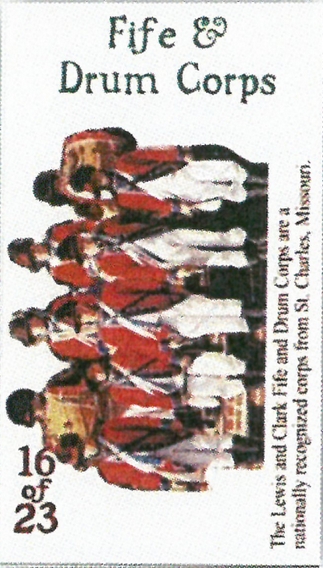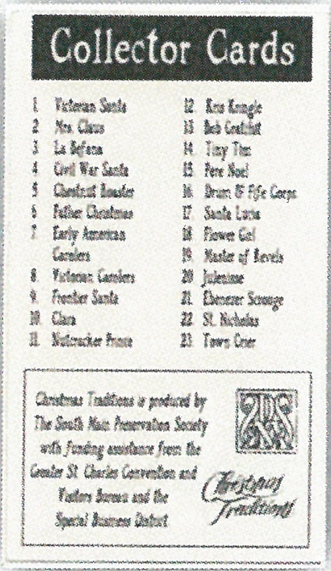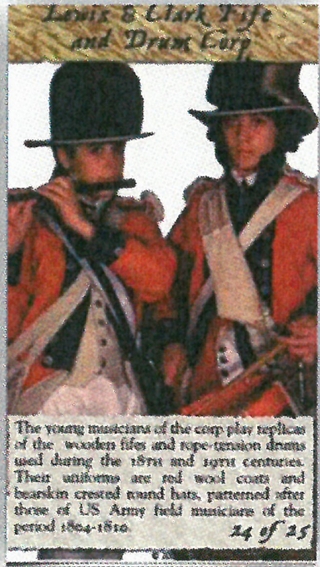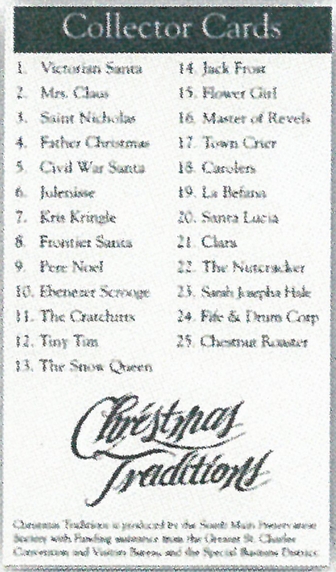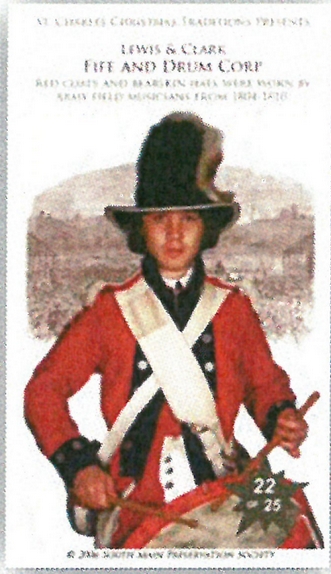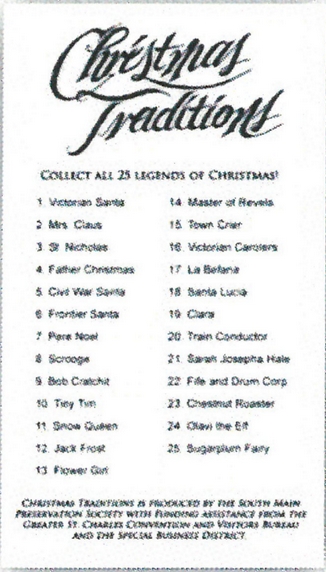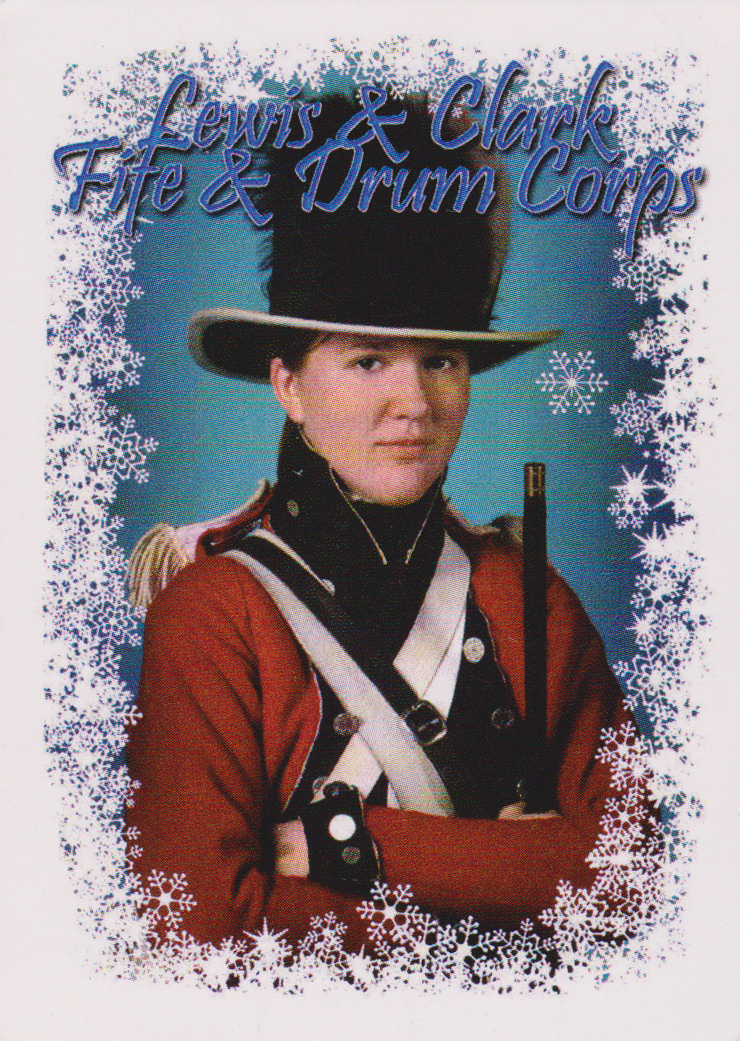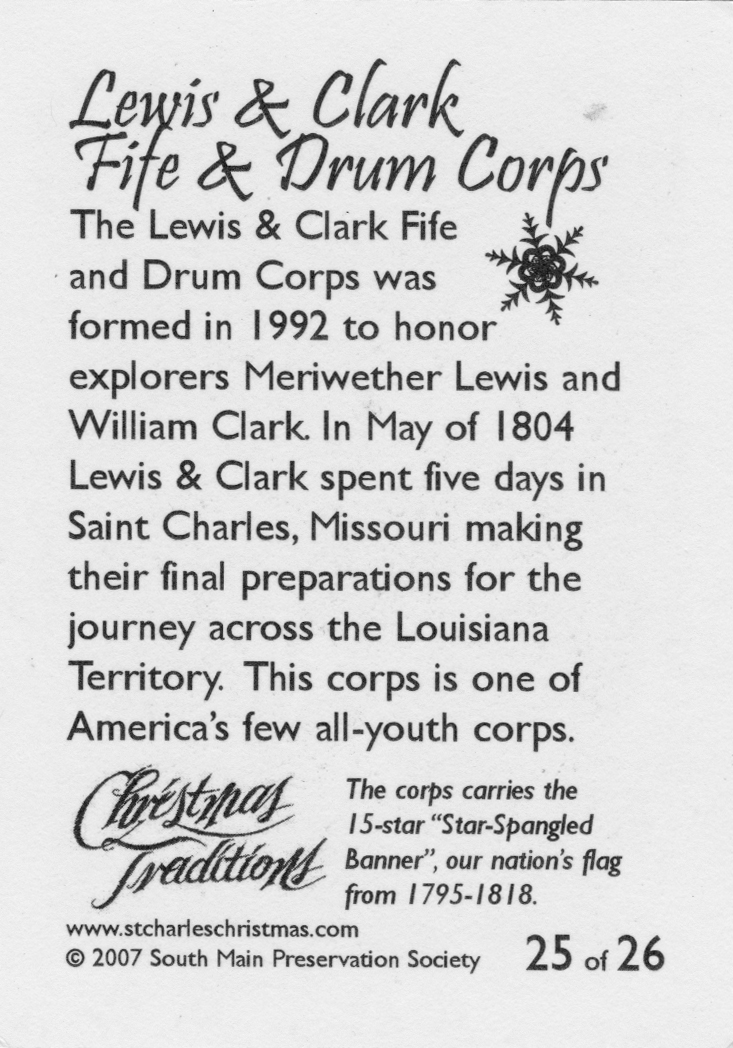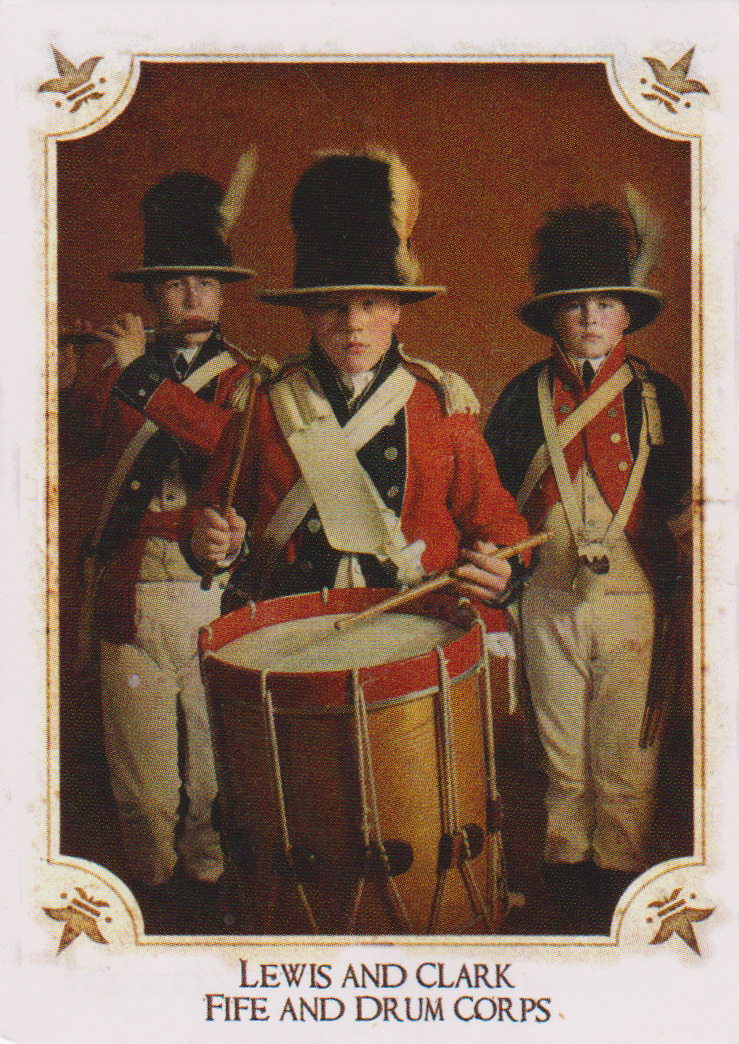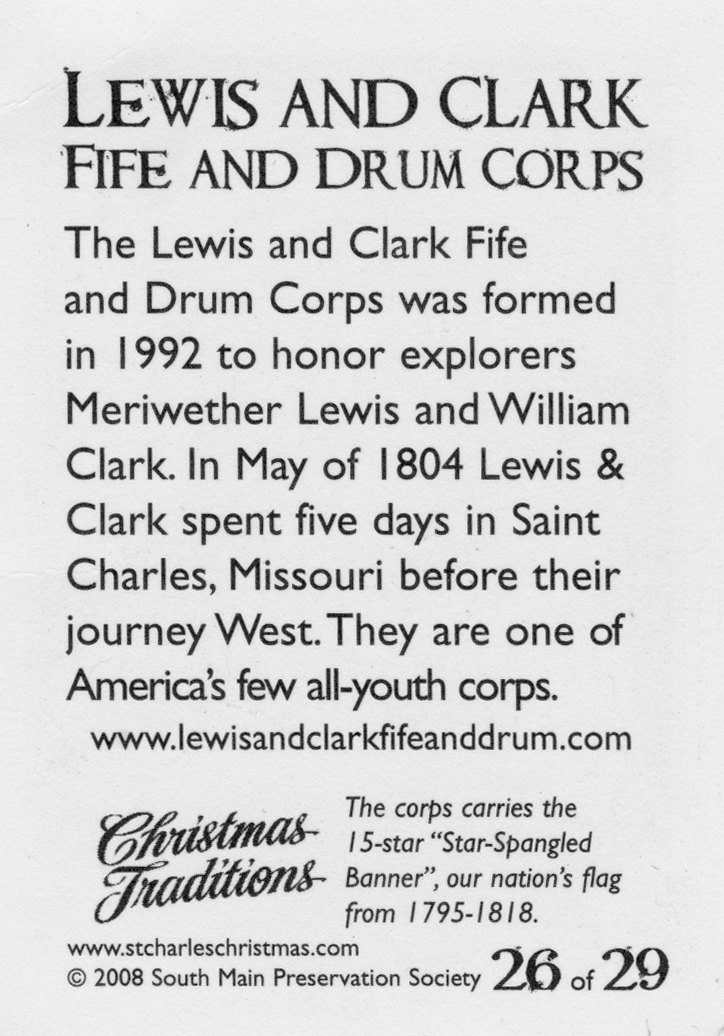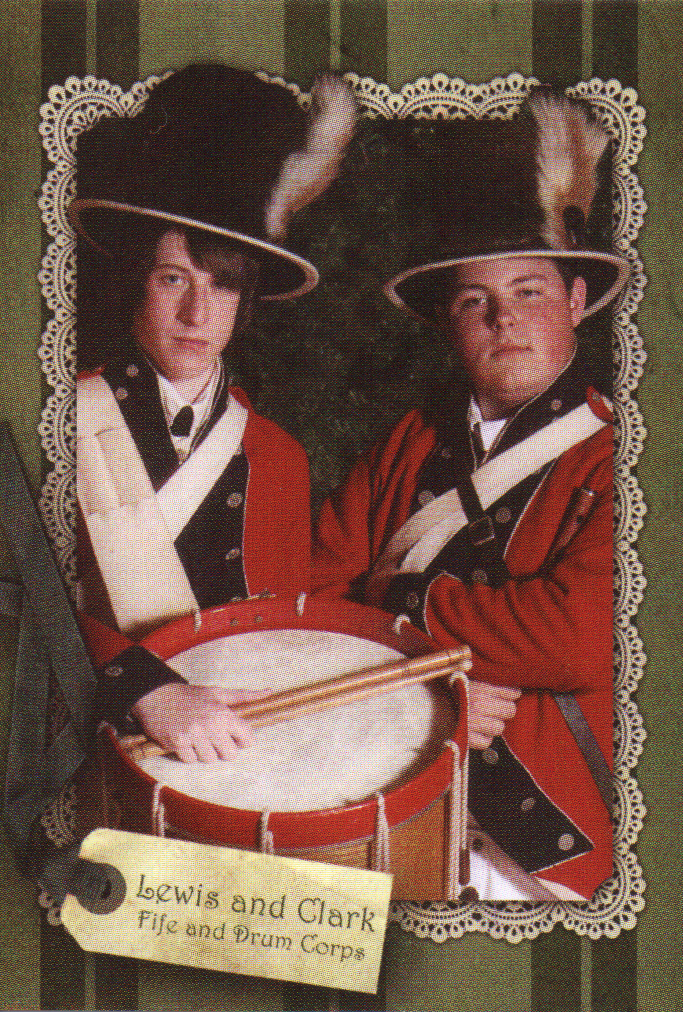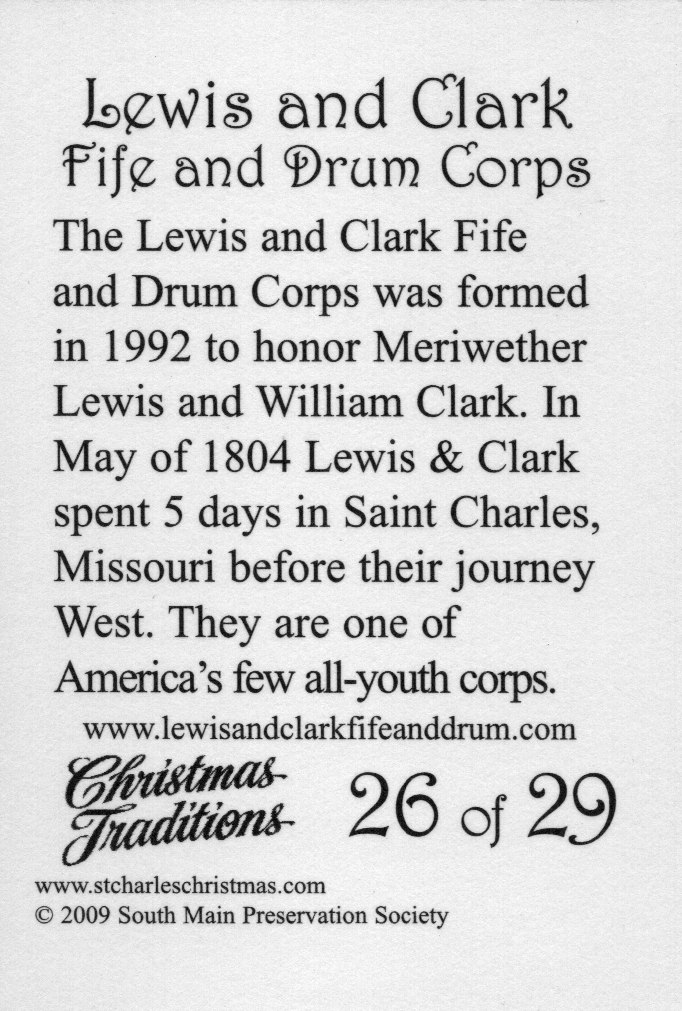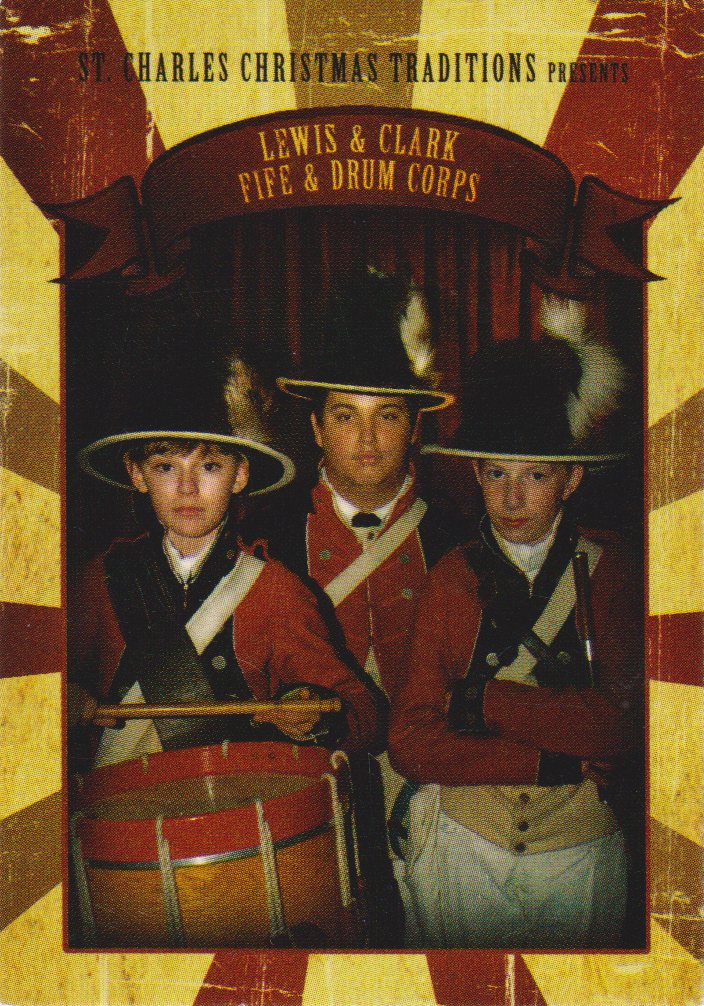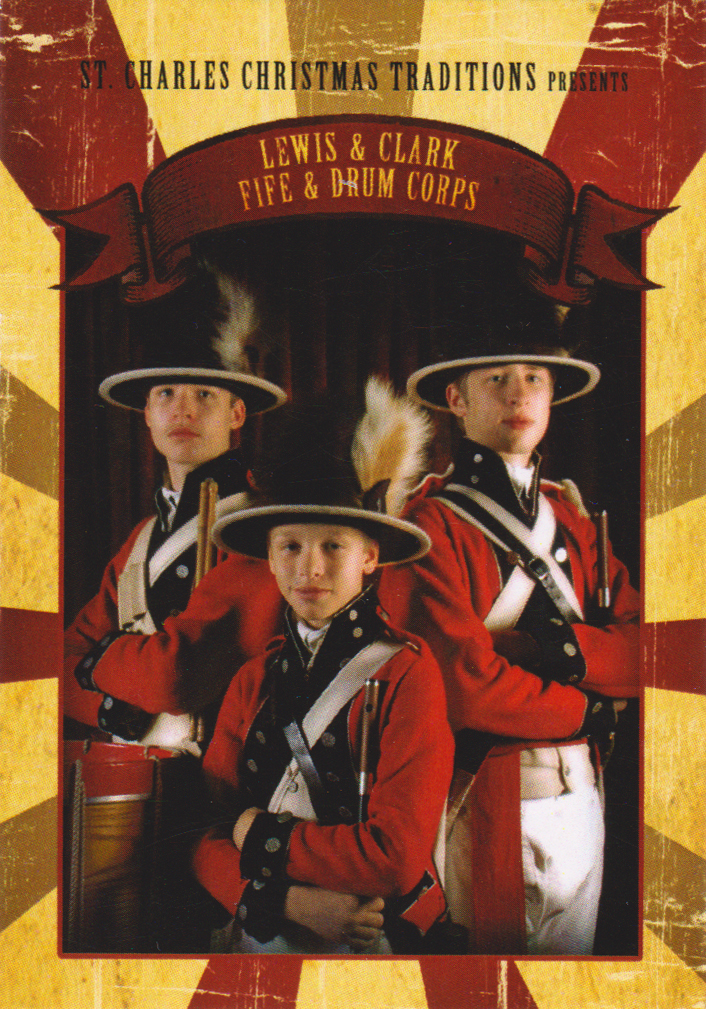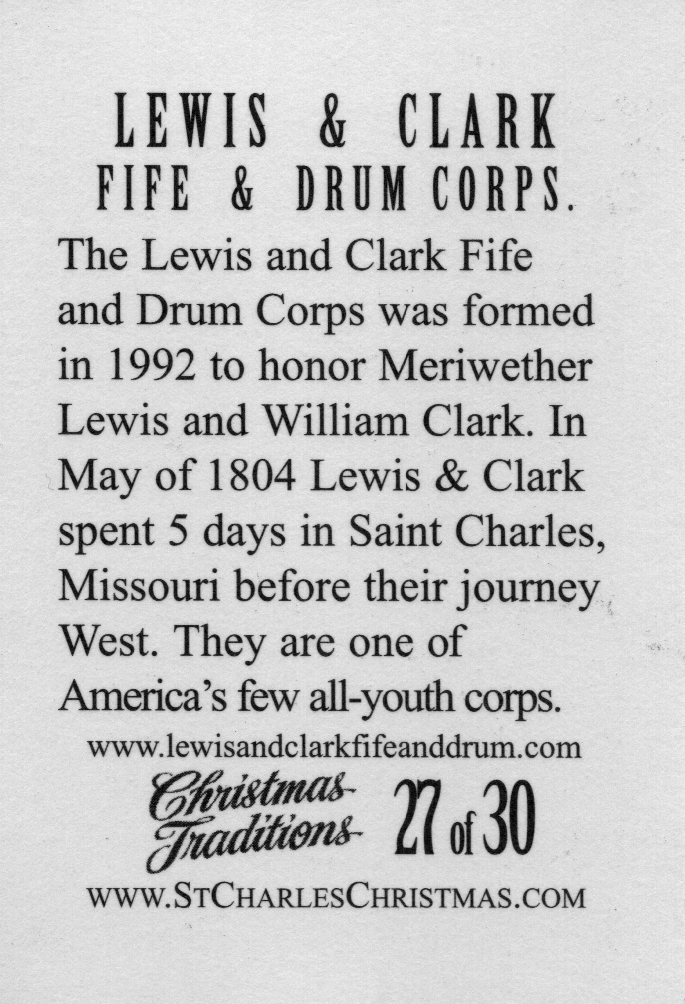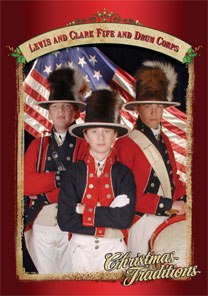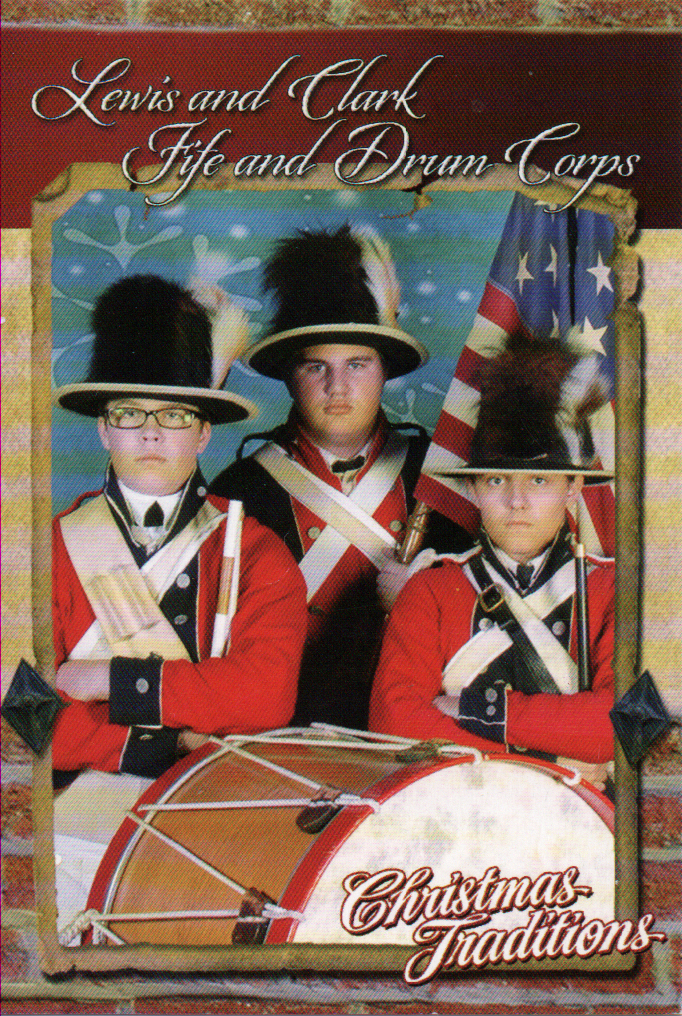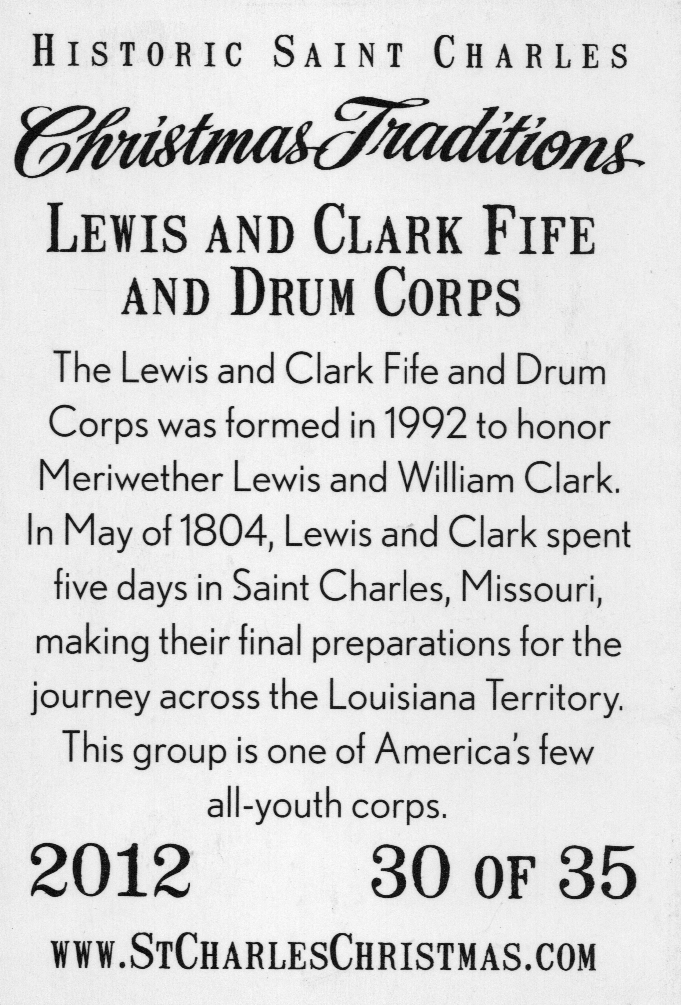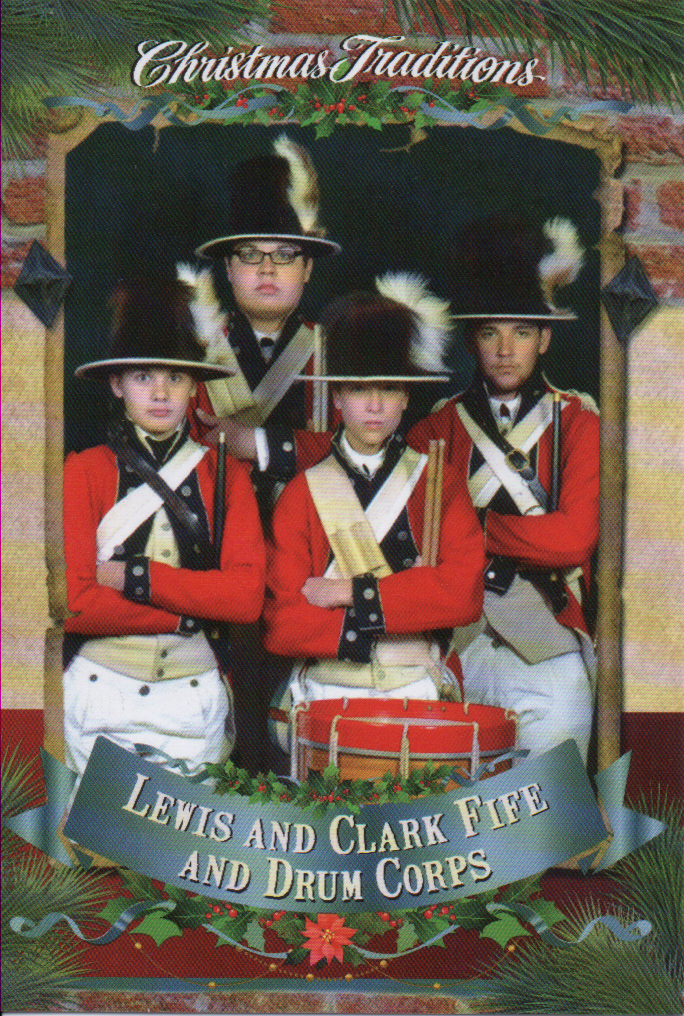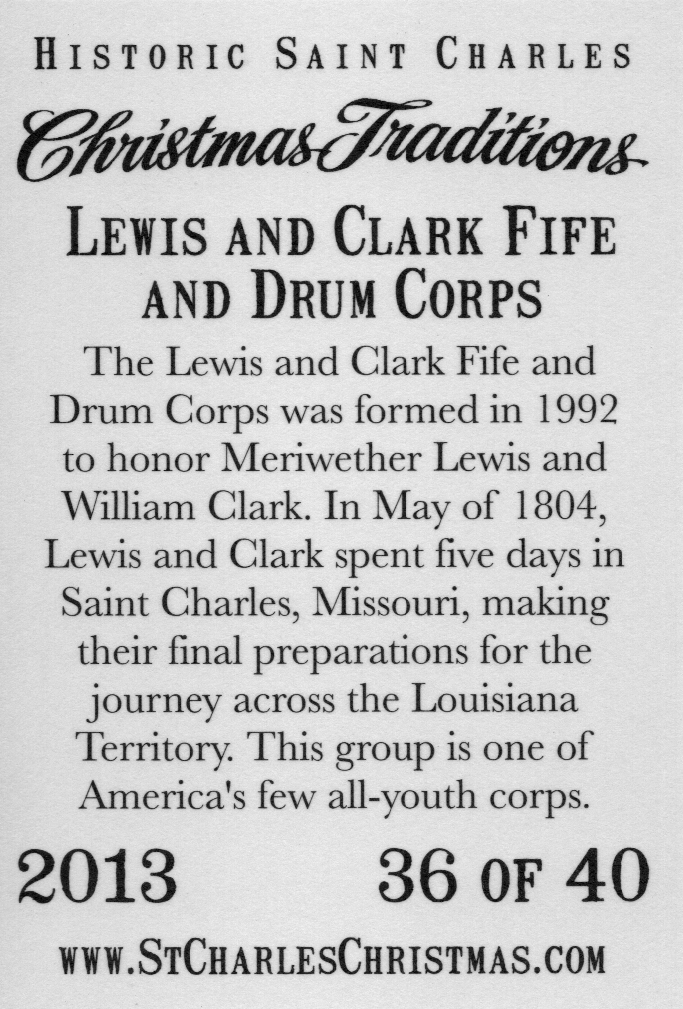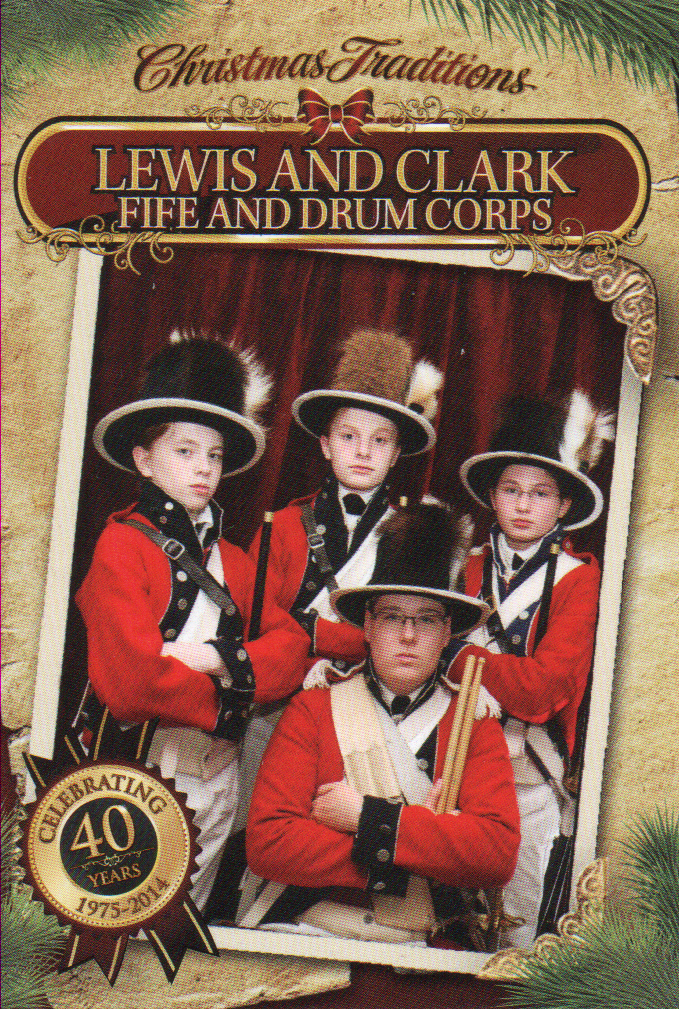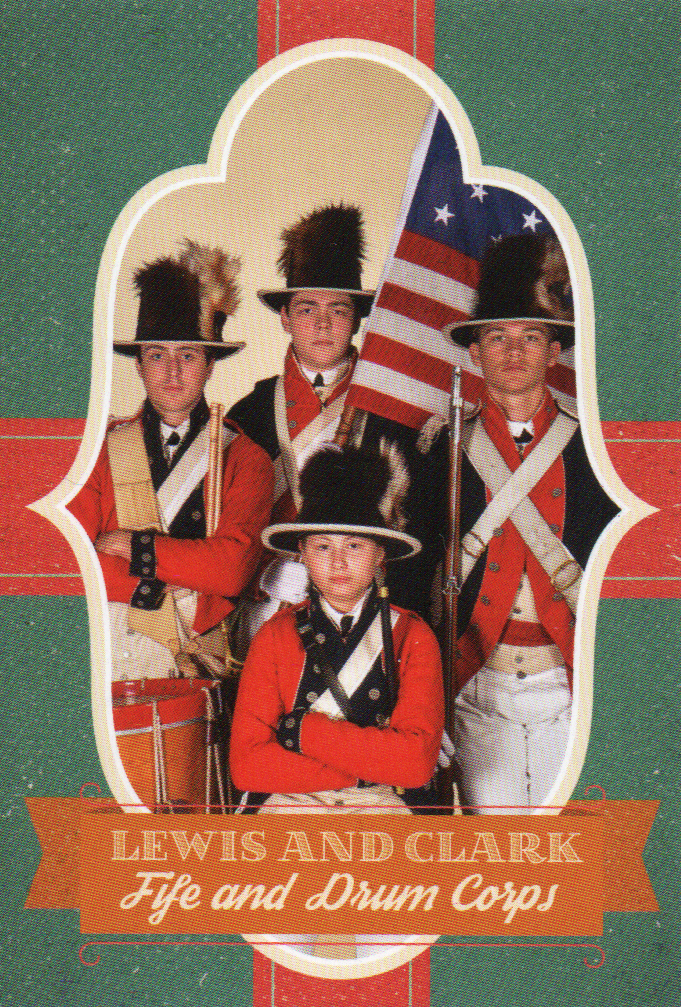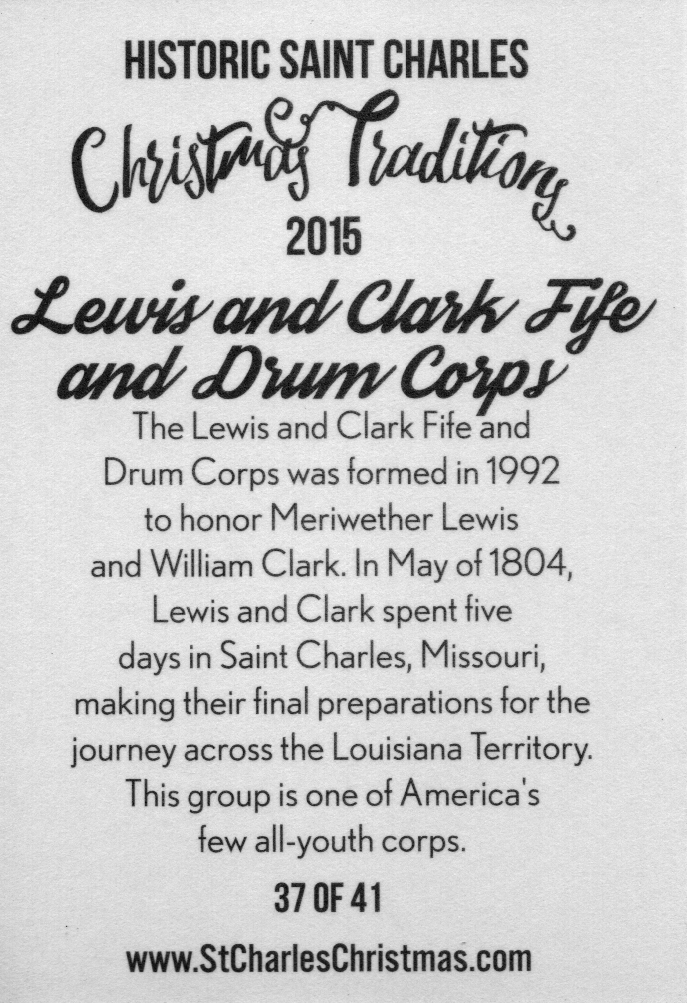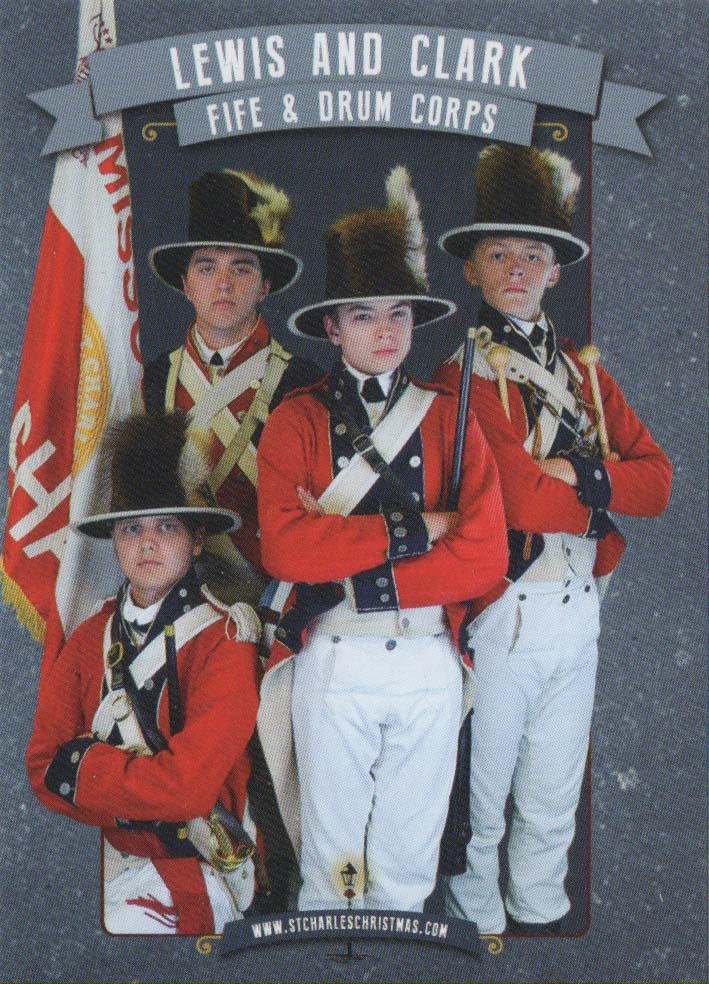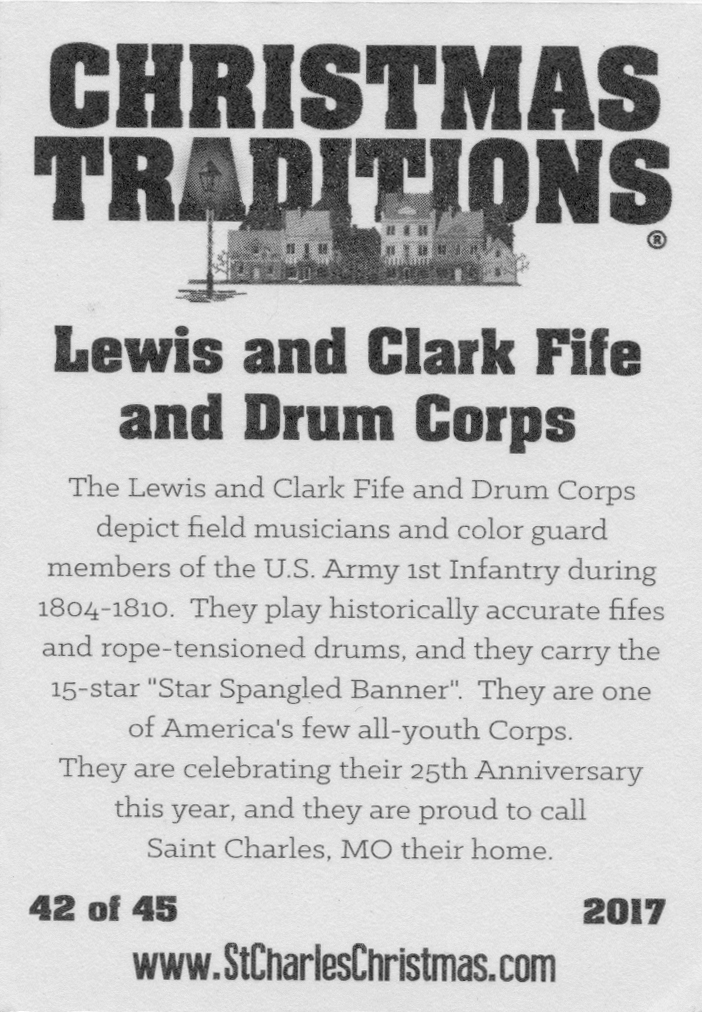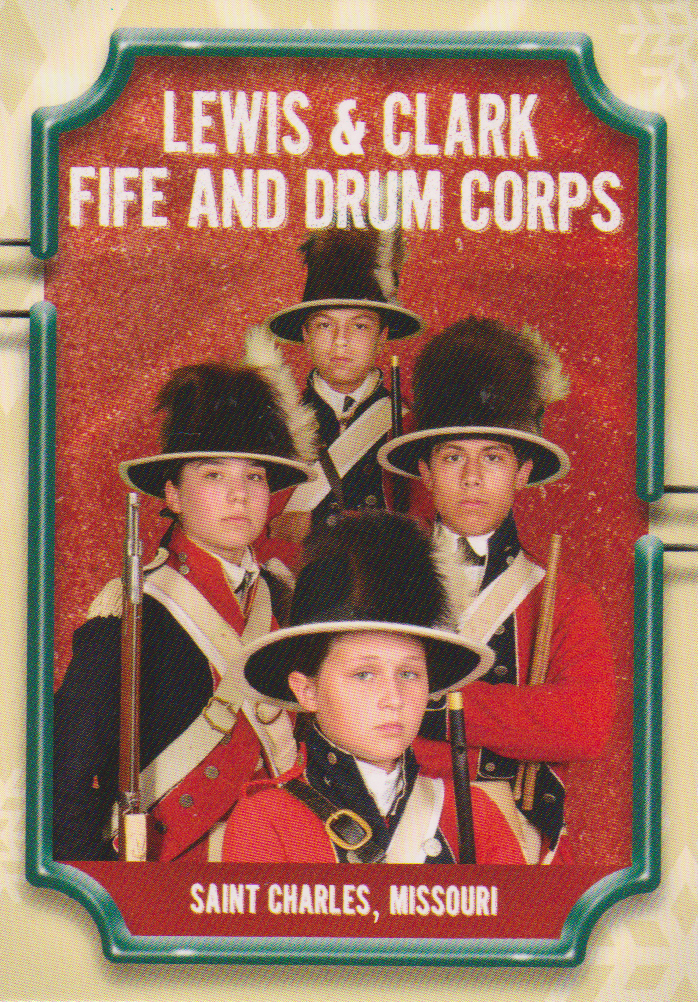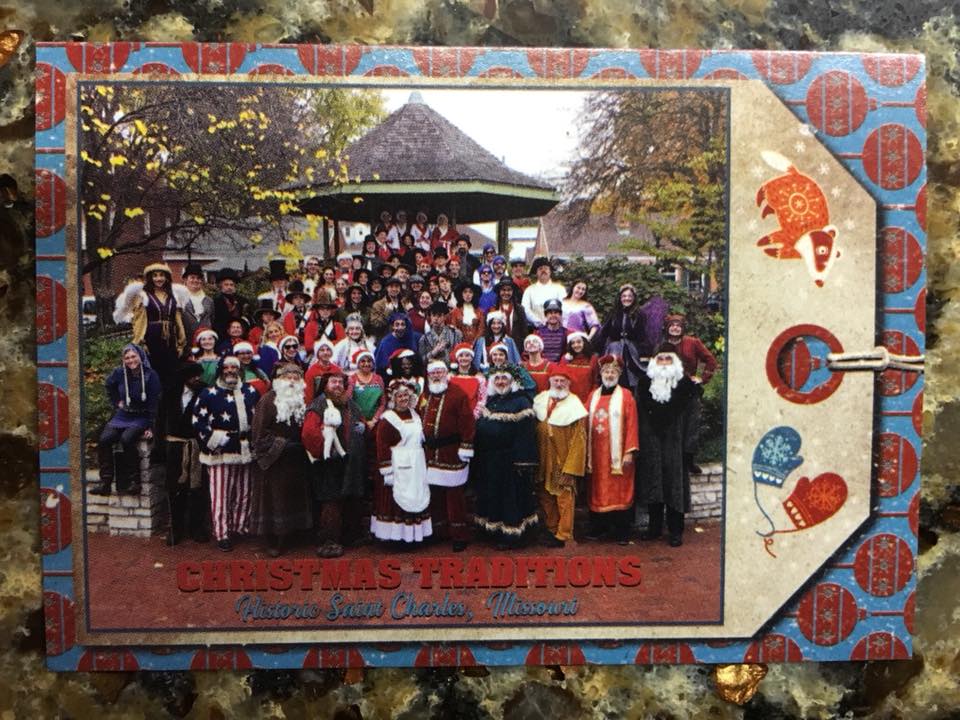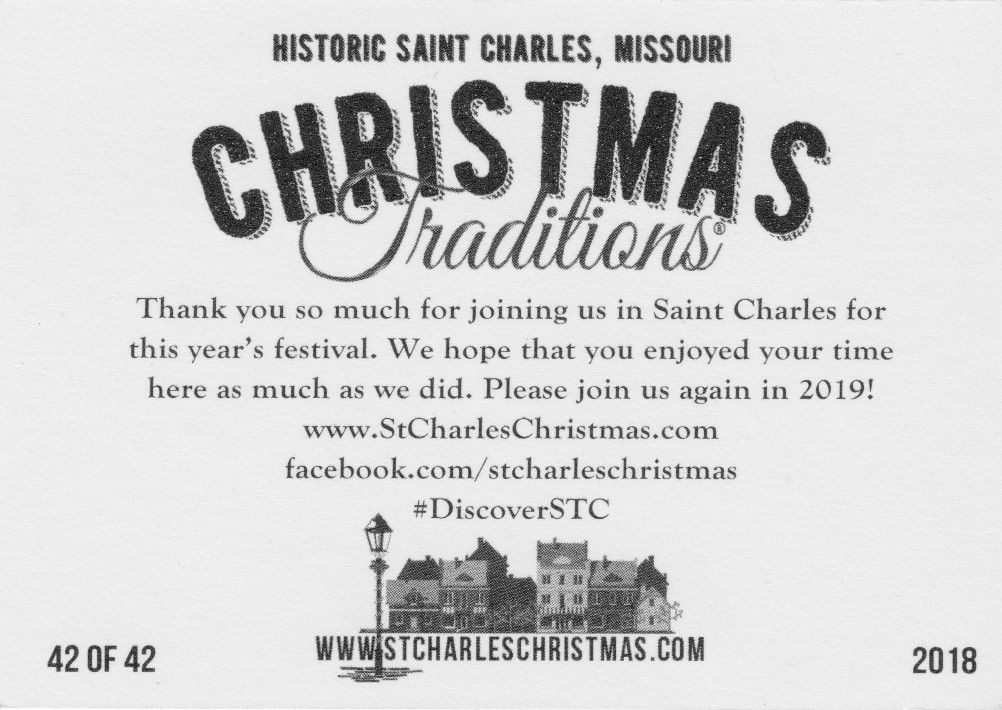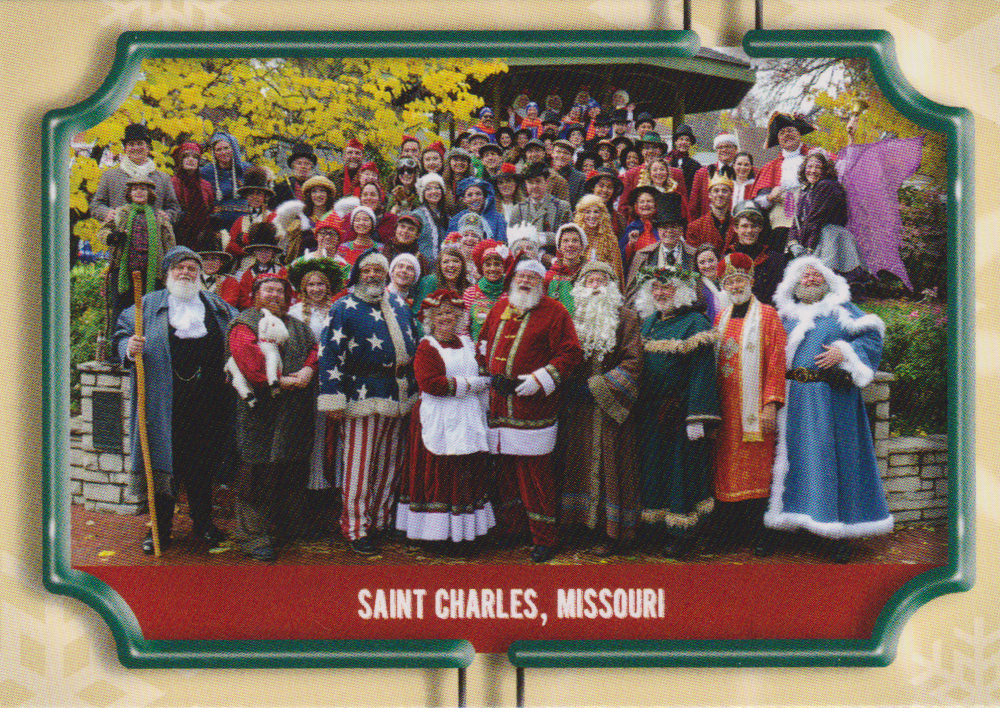History
An Exerpt from History of the Lewis and Clark Fife and Drum Corps
By LCFDC Historian Tricia Souers, 2019
The Corps Begins
In the 1970s, a Louisiana Purchase Reenactment was held in St. Charles, MO. Mr. John Dengler, the Main Street Tobaconnist, saw the Alton Colonial Fife and Drum Corps perform there.
Mr. Dengler felt very strongly that St. Charles needed a Corps of its own, and decided that one day there would be one. In the late 1970s, he further demonstrated his love of history by starting the Lewis and Clark Rendezvous--which later became known as Lewis and Clark Heritage Days.
In 1991, the city of St. Charles was accepted to be in the Washington, DC 'Celebration of Discovery' Fourth of July Parade. Mayor Grace Nichols approached Mr. Dengler and said, "Make this happen!"
They already had the replica keelboat made by Glenn Bishop to use as a parade float, since he and Mr. Dengler were members of the Discovery Expedition of St. Charles: a re-enactment group that portrays the Lewis & Clark Expedition. Mr. Dengler even got a team of Budweiser Clydesdales to pull the keelboat in the parade!
But they wanted something more to go with it--what better than a fife and drum corps?
Mr. Dengler contacted St. Charles High School teacher Bill Brecht and Dave Arns of Lindenwood University for assistance in getting a group of high school musicians together. The South Main Preservation Society of St. Charles invested nearly $10,000 in uniforms and equipment. The "St. Charles Fife and Drum Corps" was born!
The first group of 16 kids were all woodwind and percussion players from St. Charles High School and Duchesne High School. Gayle "Andy" Anderson, Band Director from St. Charles High, was their instructor. They played plastic fifes and rope tension snare and bass drums made by The Cooperman Company of Bellows Falls, Vermont.
"Upon hearing Lewis and Clark Fife Corps performances since that first year, I have recognized a number of stylistic differences that I was unaware of at the time," says Mr. Anderson. "Our performances were more in line with a contemporary style playing on historic instruments. A different director [David Migoya] came in the second year and the group definitely plays and marches in a much more authentic style now."
The name of the group became "Lewis & Clark Fife & Drum Corps of St. Charles" on August 24, 1992.
The Early Years
The first uniforms were researched and designed by military historian Laurence Epstein, and made by Kathy Foy, a historical costumer from Vintage Parlor Fashions.
In the early days of the LCFDC, the hats were felt, round-toped, with red edging on the brim--which was turned up on both sides. A strip of black bear fur ran down the center of the hat from front to back, with no cockade or other decoration. Mr. Dengler wore a red plume in his hat, and a blue coat with red facings.
The Corps first wore no gaiters at all, with black marching band shoes. White gaiters (also called spatterdashes) were soon introduced, followed by the black canvas gaiters worn today. Gaiters were worn by soldiers to protect the legs and pants.
Modern white Dickies work pants were worn with white modern button-down oxford shirts, under a white cotton weskit, or waistcoat (called a vest today). The red coats were wool, "making us almost pass out in parades," says original fifer Becky Kiethline Marvin. Later, black leather neck stocks were added.
The fifers first played on plastic fifes. "I still have both of mine," says Becky Kiethline Marvin, referring to her plastic and wood fifes. There was no Color Guard, and John Dengler or his daughter, Laura Muench, would walk in front.
Corps Changes
The wood fifes have changed through the years. When Dave Migoya was hired as Music Director after that first appearance in Washington, DC. he worked with The Cooperman Company to have a new six hole, one piece fife made that harmonized better in a group--those were used first, followed by two- piece six hole McDonagh fifes, two-piece ten hole Healy fifes, and currently six hole, one piece Model F fifes.
By 1995, the gaiters, or spatterdashes, that the Corps wears around their ankles changed from white to the black they wear today. The great coats have always been wool, but have changed style twice since those first coats. The bearskin crested hats changed from round-topped and red-rimmed to flat-topped, white-rimmed carriage hats. Wool foraging caps are worn in the rain.
At some point in the Corps' early history, they even had a 'summer weskit' in navy blue, so they looked more colorful when it was too hot to wear the wool great coat. Currently, the 'whites,' or small clothes, are worn without the coat in extreme heat.
A Recruit uniform was introduced around the year 2010: wool foraging cap, osnaburg work shirt, canvas sash and haversack.
The drums have remained the same--in fact, some are the originals played by the Corps in 1992 (with some parts replaced, of course)!
Over the years, "of St. Charles" was dropped from the end of the Corps' title. Now they are the Lewis and Clark Fife and Drum Corps.
The first Color Guards were Corps Dads or members of the Discovery Expedition of St. Charles, until youth Color Guard Members were added. Their blue coats with red facings have only had two versions, whereas the red musician coats have undergone three changes in pattern.
The Color Guard proudly carries the 15-starred Star Spangled Banner. The Missouri flag was replaced by a red and white St. Charles flag, and a blue LCFDC flag was specially handmade for the Corps--designed by Corps Dad and President Bill Brecht, and sewn by Bev Moore--it is still used today. The Color Guard now has two muskets, carried by those with Level 2 status.
The Historical Background of the Lewis and Clark Fife and Drum Corps
by Peter Bringe
The Peace Establishment:
After the American War for Independence, there was heated debate whether there should be a standing regular army, or whether state militias were sufficient during peace times. For example, it was argued (by Elbridge Gerry) that “standing armies in liberties of a free people, and generally converted into destructive engines for establishing despotism.” When Thomas Jefferson became president in 1801, he followed up on his promises to reduce the standing army to the Peace Establishment of 1802. Thus, the US Army after 1802 consisted of only two regiments of infantry (the 1st and the 2nd), one regiment of artillery, and a small corps of engineers, totaling about 3,000 men. The army was primarily tasked with protecting the western frontier of the new republic. It was only expanded as the War of 1812 approached, first in 1808 and then in 1812.
1st US Infantry:
Our corps depicts musicians from the 1st US Infantry during this period. The 1st Infantry, like most of the army, guarded the frontier. It was made up of companies (of about 50-100 men) who were scattered among various forts and garrisons, such as Fort Massac in southern Illinois. In 1805, troops from the 1st Infantry came to St. Louis to establish Fort Bellefontaine. Fort Bellefontaine would serve as the regional headquarters for the army until 1826, when they moved to Jefferson Barracks. In 1808, the 1st Infantry also built and garrisoned Fort Osage (near Kansas City) and Fort Madison (in modern-day Iowa). In 1810, the first regiment had 491 total men including 22 fifers and drummers. After fighting in the War of 1812, they were consolidated with a few other regiments in 1815 to become the 3rd US Infantry (The Old Guard).
Lewis and Clark:
The Corps of Discovery recruited men from all three regiments of the army, thus their uniforms were not completely uniform. They wore the uniforms already issued by their regiments. Captain Lewis was the 1st Infantry, while Captain Clark was in the 1st Artillery (incidentally, Major Zebulon Pike, also a western explorer of the time and the namesake of Pike’s Peak, was also in the 1st Infantry). The military members of the Corps of Discovery started the expedition in military uniforms, though these wore out during the trip.
The Uniforms:
We wear the dress uniform of the musicians/color guard:
Round Hats Bearskin-crested round hat with deer tail, black cockade, and eagle.
Fatigue Caps An informal wool hat to be worn on fatigue duty and other similar work.
Wool Coats Musicians wore red coats to distinguish themselves from regular soldiers in blue. This distinction was common among European armies in the 18th and 19th centuries.
Vest/Waistcoat White wool vests to be worn under the coat.
Shirt Linen or cotton shirts. They would generally be very long and serve as undergarments.
Neck Stock Leather bands for a stiff look (possibly a remnant from the day of sword fighting).
Pantaloons A new fashion where trousers extended down to the ankles and tucked into. . .
Gaiters Short, black, and linen or canvas, these would become taller and made of wool in the War of 1812.
Black Shoes Right and left shoes would have been made identical, molding in time to the feet.
Accoutrements Haversack and canteen on the left shoulder, musical instrument on the right.
Below is a gallery of the LCFDC-specific cards that are handed out during Christmas Traditions, by the various characters. The earliest cards we have start in 2004.
